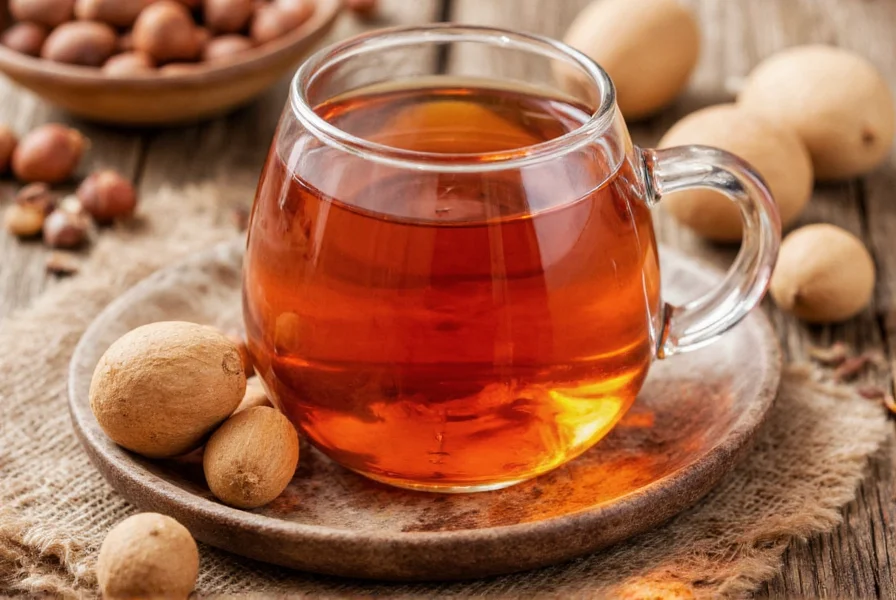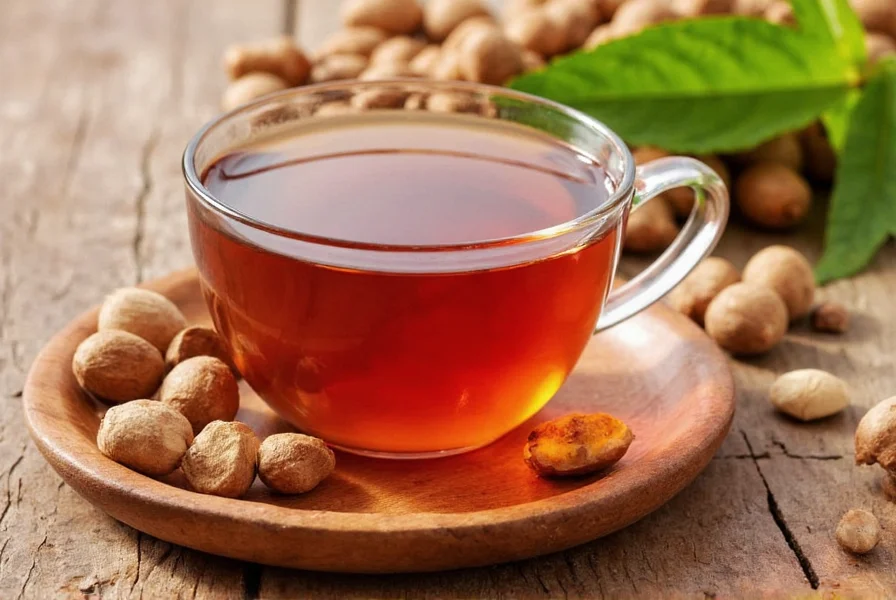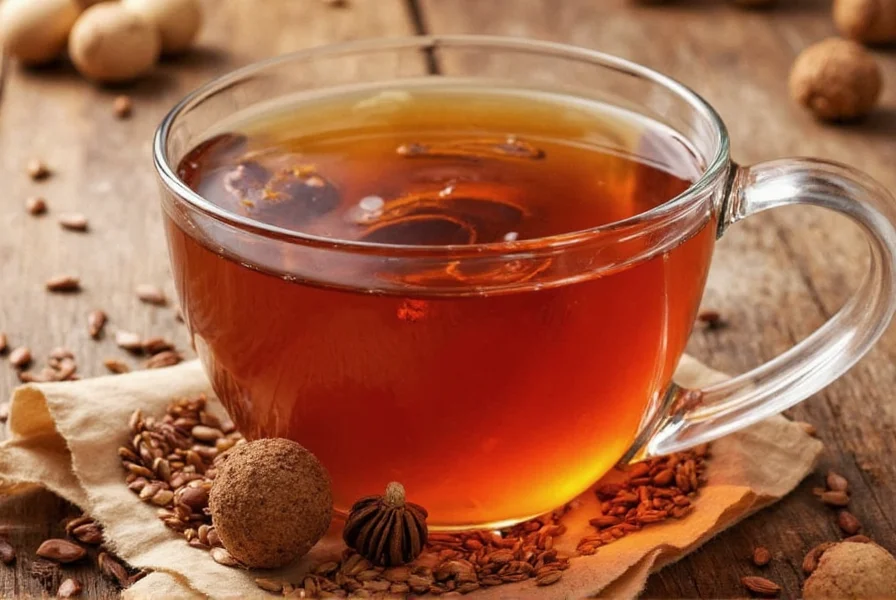Nutmeg tea represents one of the lesser-known herbal infusions with roots in traditional medicine practices across Southeast Asia and the Caribbean. Unlike conventional teas derived from Camellia sinensis, this beverage utilizes the aromatic seed of the nutmeg fruit, creating a distinctive warm, slightly sweet infusion with earthy undertones. Understanding proper preparation methods and appropriate consumption levels is essential for safely enjoying this unique herbal drink.
What Exactly Is Nutmeg Tea?
Nutmeg tea isn't technically a "tea" in the botanical sense, but rather an herbal tisane made by steeping ground nutmeg seeds in hot water. The nutmeg tree (Myristica fragrans) produces two spice products: the seed becomes nutmeg, while the lacy red covering becomes mace. Both can be used to create similar infusions, though nutmeg produces a richer, more complex flavor profile.

Traditional Preparation Methods for Nutmeg Tea
Authentic nutmeg tea preparation requires attention to detail to maximize flavor while maintaining safety. The most effective method involves:
| Preparation Step | Recommended Measurement | Time/Temperature |
|---|---|---|
| Grating nutmeg | 1/4 to 1/2 teaspoon freshly grated | Immediately before brewing |
| Water temperature | 8-10 ounces | 195-205°F (just below boiling) |
| Steeping time | N/A | 5-7 minutes |
| Maximum daily consumption | 1-2 cups | N/A |
Using freshly grated nutmeg rather than pre-ground powder significantly enhances both flavor and potential benefits, as the volatile oils responsible for nutmeg's characteristic aroma begin deteriorating immediately after grinding. Many traditional preparations combine nutmeg with complementary ingredients like cinnamon, ginger, or honey to create more complex herbal blends that support digestive health.
Evidence-Based Health Considerations of Nutmeg Tea
While scientific research on nutmeg tea specifically remains limited, studies on nutmeg compounds suggest several potential health implications. The primary active compound, myristicin, demonstrates anti-inflammatory properties in laboratory settings. However, these findings shouldn't be interpreted as medical advice or treatment recommendations.
Traditional uses of nutmeg tea have focused on digestive support, with many cultures consuming small amounts after meals to alleviate bloating and indigestion. Some preliminary research suggests nutmeg compounds may interact with certain neurotransmitters, potentially explaining its historical use as a mild sedative when consumed in appropriate quantities.
Safety Guidelines for Nutmeg Tea Consumption
Understanding the safety parameters for nutmeg tea is crucial. Nutmeg contains myristicin, which in high doses (typically exceeding 5 grams or about 1 teaspoon of ground nutmeg) can cause unpleasant and potentially dangerous side effects including:
- Dry mouth and throat
- Increased heart rate
- Nausea and dizziness
- Visual disturbances
- Delirium in extreme cases
These effects usually appear 1-6 hours after consumption and can last up to 48 hours. For safe consumption, limit nutmeg tea to no more than 1/2 teaspoon of freshly grated nutmeg per cup, with a maximum of 1-2 cups daily. Pregnant women, children, and individuals with liver conditions should consult healthcare providers before regular consumption.

Nutmeg Tea in Culinary Traditions Worldwide
Cultural approaches to nutmeg tea vary significantly across regions where the nutmeg tree grows natively. In Indonesia, the birthplace of nutmeg cultivation, traditional preparations often include palm sugar and pandan leaves. Caribbean variations frequently incorporate allspice and cloves for a spicier profile, while European adaptations typically feature lemon and honey.
Unlike commercial herbal tea blends that may contain minimal nutmeg alongside other ingredients, authentic nutmeg tea focuses primarily on the nutmeg itself, allowing its distinctive flavor to shine. This distinction matters for those seeking the specific properties associated with nutmeg rather than a general herbal blend.
When Nutmeg Tea Might Not Be Appropriate
Certain health conditions and medication regimens warrant caution with nutmeg tea consumption. Individuals taking monoamine oxidase inhibitors (MAOIs), certain antidepressants, or sedative medications should avoid nutmeg tea due to potential interactions. Those with bleeding disorders should also exercise caution, as nutmeg may affect blood clotting.
The line between culinary use and medicinal application remains important to recognize. While small amounts of nutmeg in tea form generally present minimal risk for most adults, using nutmeg tea as a treatment for specific health conditions lacks sufficient scientific backing. Always consult healthcare professionals before using nutmeg tea for therapeutic purposes.
Creating Your Perfect Nutmeg Tea Experience
For optimal flavor and potential benefits, consider these professional tips for preparing exceptional nutmeg tea:
- Use a microplane grater for the finest texture and maximum oil release
- Add a pinch of black pepper to enhance absorption of beneficial compounds
- Combine with cardamom for a more complex aromatic profile
- Steep in a pre-warmed teapot to maintain consistent temperature
- Add lemon juice after steeping to preserve volatile compounds
These techniques, drawn from traditional preparation methods, help maximize both the sensory experience and potential benefits of this distinctive herbal infusion while maintaining appropriate safety parameters.











 浙公网安备
33010002000092号
浙公网安备
33010002000092号 浙B2-20120091-4
浙B2-20120091-4